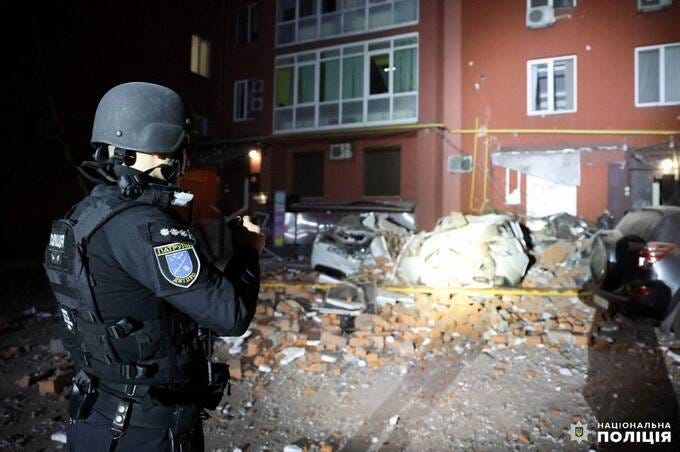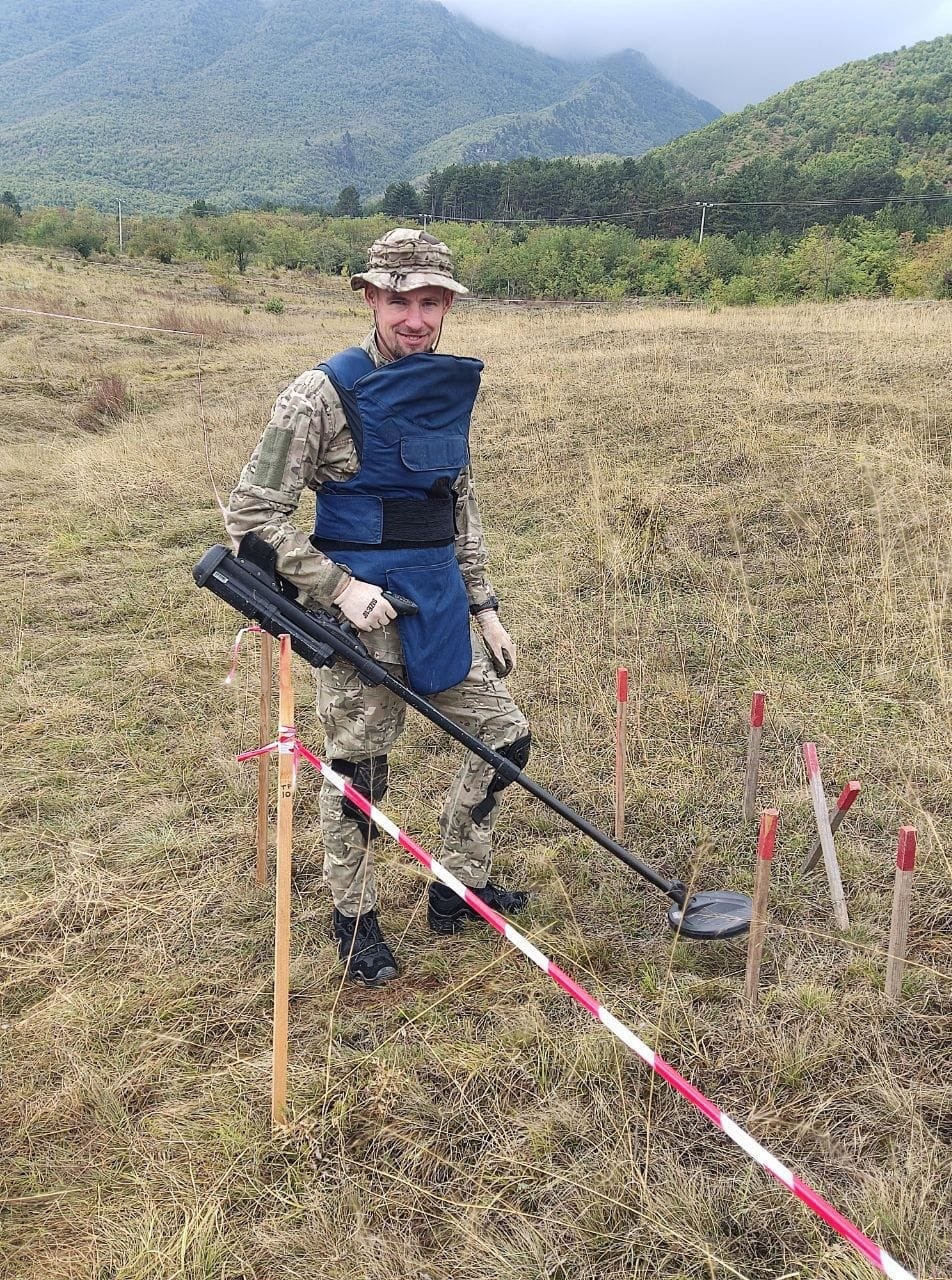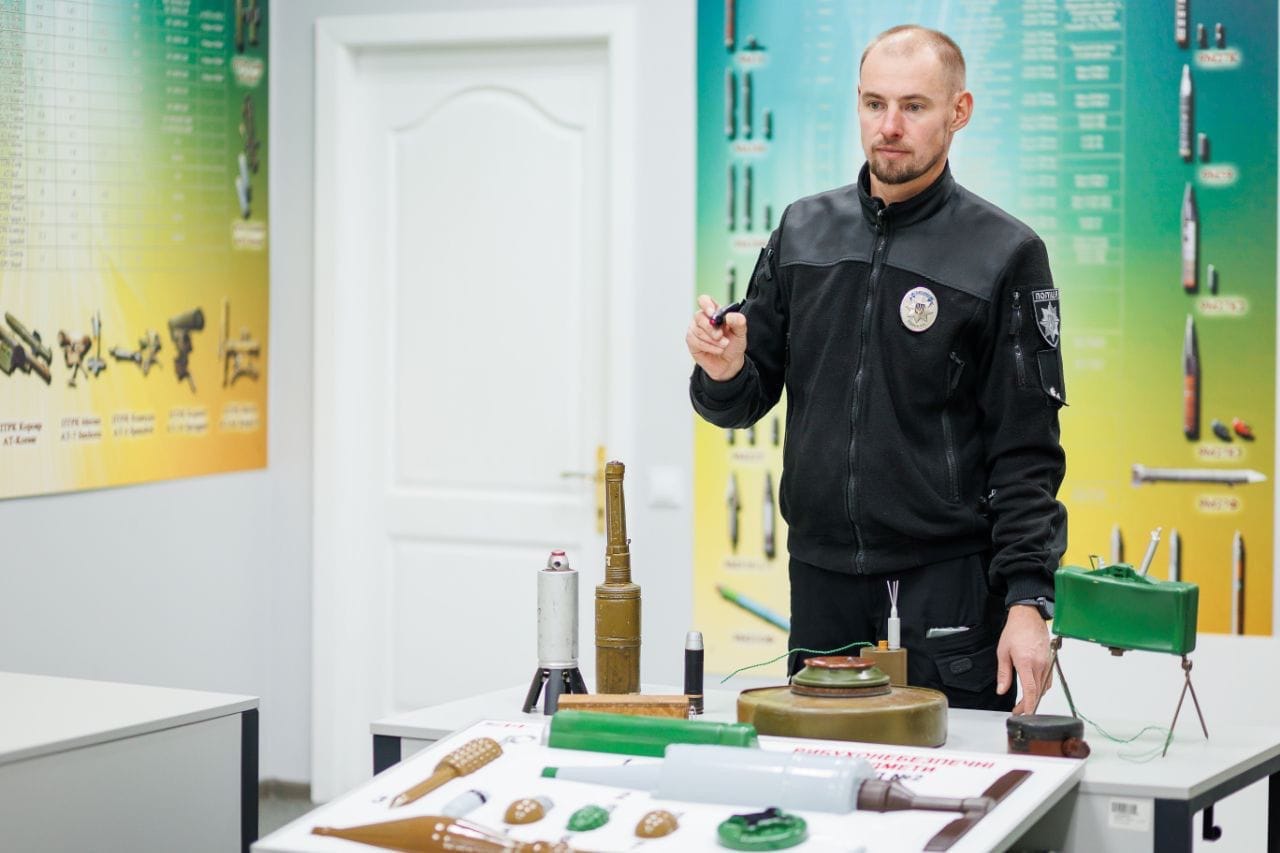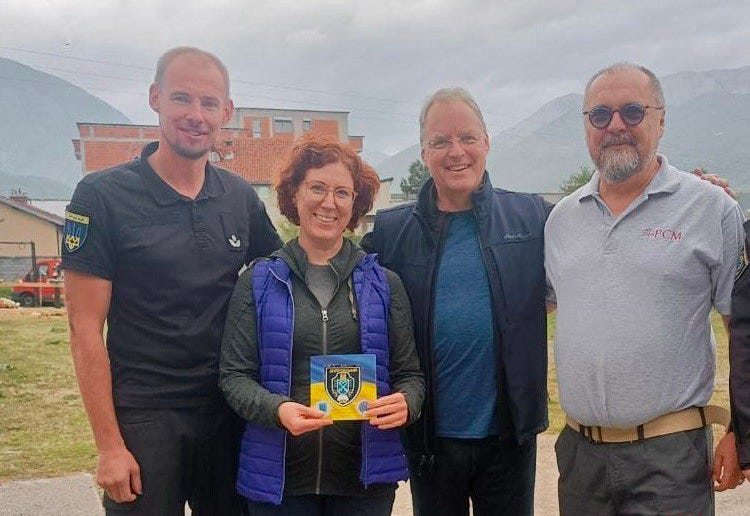Why Ukraine Needs More Police Officers with EOD Training...
...and How Mriya Aid is Helping
Recently, Mriya Aid paid for five Ukrainian National Police officers to train to Levels 1 & 2 IMAS EOD at the internationally recognized and purpose-built MAT Kosovo EOD and IED training facility that has trained over 450 Ukrainian sappers, with almost 300 of these paid for and organized by Mriya Aid.
In cities across Ukraine, daily barrages of Russian missiles and Iranian-made drones are leaving residential streets littered with unexploded ordnance. What was once a safe sidewalk can now conceal the shrapnel of a downed drone, cluster munitions that it disbursed, or a live warhead primed to detonate hours after impact.
Ukrainians know not to approach these objects: instead, they call the police. But since the beginning of Russia’s full-scale invasion in 2022, police officers are no longer just securing the perimeter. Increasingly, they are the first to arrive and to identify and assess the threat and to make critical decisions, sometimes without sufficient training that such responsibility demands.
Police officers are often the first to arrive at the scene of an explosion, drone strike, or missile impact.
“Before the war, we had bomb disposal units for this work. Regular officers weren’t expected to intervene,” explains Vadym Fursa, a 37-year-old officer from the front-line city of Dnipro. “Now, we are first on the scene. And we must act.”

Dnipro is shelled regularly. On some nights, the air raid alarms last six to eight hours. Fursa and his team respond to nearly every strike site, knowing that what lies there might kill them or civilians if any miscalculation or unexpected situation takes place. Trained in law enforcement since age 19, Fursa embodies the archetype of the career officer. As a child, he dreamed of protecting his city. Today, that dream includes understanding the anatomy of a bomb.
Unable to wait for specialized training to catch up with demand, Fursa began educating himself, seeking out courses and reading manuals. His efforts led him to Mriya Aid’s EOD Program, through which he completed IMAS Levels 1, 2 and 3 at MAT Kosovo in 2024.

He wasn’t the first Ukrainian police officer to train there nor the only officer supported by Mriya Aid, but his dedication stood out. After weeks of rigorous training, Fursa graduated as one of two highest-performing students in the centre’s 25-year history.
“The safety of my city depends on the people I train,” he says. Fursa now is a head of the Department of Tactical and Special Training at Dnipro State University of Internal Affairs, where he instructs new police recruits. He has integrated the methods, materials and practical focus learnt at MAT Kosovo into his own curriculum.
“Our training materials are now much better,” he notes. “We’ve emphasized hands-on, scenario-based exercises, just like we did at MAT Kosovo. But there is still enormous demand. We need many more officers trained and certified to international standards.”
Although no official statistics exist on the number of Ukrainian police officers killed by explosive hazards, Fursa says the losses are significant. Many died simply because they lacked the proper knowledge. Mriya Aid hears about such indicents from every NGO, state agency, EOD professional and deminer working in Ukraine. The scale of the threat is staggering since the start of the full-scale invasion. Ukrainian police have disposed over 898,000 explosive devices, according to the Ministry of Internal Affairs.
Fursa is pragmatic: “The more officers we train, the more lives we save.”

He believes that international standards and training like MAT Kosovo’s cannot be fully replaced by national programs. “There are skills you can only practice at MAT Kosovo, like how to safely neutralize aerial bombs or the remains of cruise missiles in urban environments where transportation is impossible,” he says.
One such skill involves “partial destruction” or the “low order” technique - the controlled elimination of explosives in place, without moving them. “In real conditions, you don’t always have time, tools or opportunity to evacuate a munition. You must make the right call on the spot,” Fursa says. This is especially the case in urban environments, in areas proximate to critical infrastructure, and near buildings that can still be cleared and rendered safe.
At MAT Kosovo, Vadym also learned to handle explosive traps and improvised devices planted by Russian troops in areas frequented by civilians. These are often disguised, delayed, or triggered by movement, magnetic fields, or simple human curiosity. Russian forces use children’s toys, musical instruments, food and pets as lures and traps that explode upon contact.
“The hardest part is that you can never memorize it all. Russia constantly invents new ways to hide explosives, like drones rigged with time-delayed bombs that detonate 20 hours later,” he says.
“It’s not enough to see the threat. You have to recognize it early and stop it in time.”

Vadym Fursa and his colleagues express deep gratitude to Mriya Aid and their donors who made this training possible. The knowledge police officers bring back from MAT Kosovo will be immediately put to use. These skills don’t just make their work safer- they literally save lives.
Please consider donating here for EOD training and equipment for Ukrainian sappers and deminers working in the AFU, the State Special Transport Services, the National Police of Ukraine and emergency services.


Слава Україні
Heroes, all of you. Героям слава!